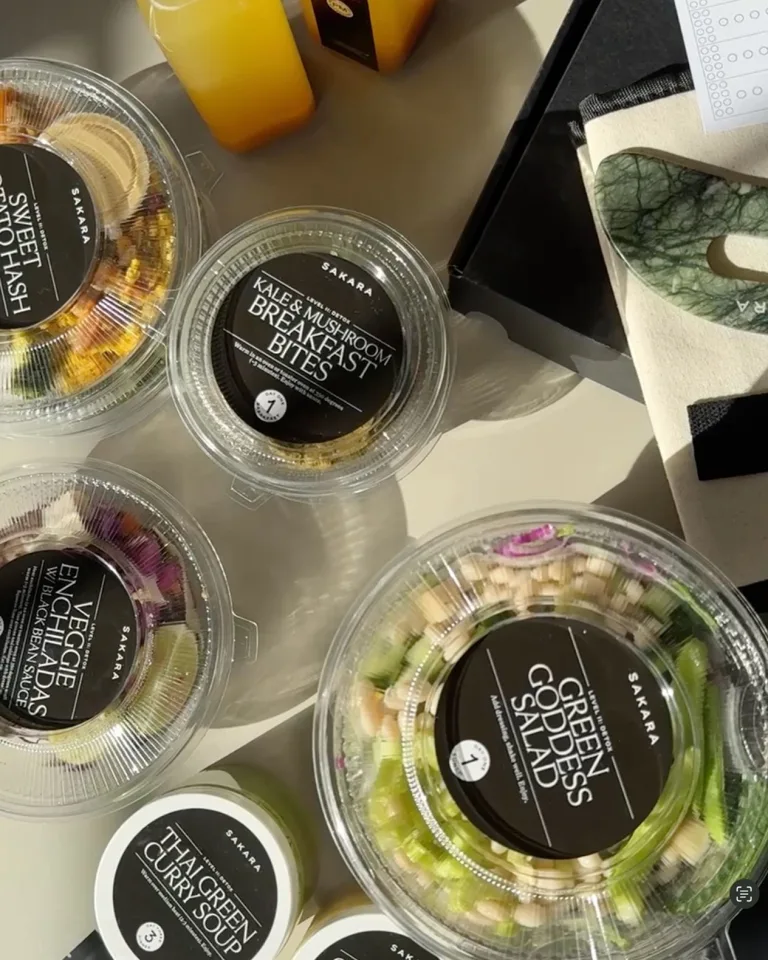In the wellness world, the terms “cleanse" and “detox" are often used interchangeably, but they serve distinct purposes.
By Colleen Coffey, MS, RDN, LDN
•Nov 05, 2024
Discover the key differences between a cleanse and detox, and how they work.

By Colleen Coffey, MS, RDN, LDN
•Nov 05, 2024
While both aim to enhance well-being, they operate differently. A cleanse primarily focuses on resting the digestive system, reducing bloating, and promoting regular bowel movements; it acts as a digestive reset. A detox, however, supports the body's natural detoxification organs—especially the liver—by guiding the body through the processes of toxin release, neutralization, and elimination.
Many programs on the market lack scientific foundation, giving the illusion of effectiveness by making you feel lighter or more clear-headed for a short time. However, real detoxification involves supplying the necessary nutrients to process and eliminate toxins, particularly through supporting liver function (r, r).
Toxins can accumulate in our bodies over time, especially with today’s exposure to environmental pollutants and harmful chemicals in household products, along with inefficiencies in clearing toxins from our systems. Symptoms like fatigue, weight gain, cognitive issues, and even conditions such as type 2 diabetes, infertility, and neurological diseases have been linked to toxin buildup (r). While no single symptom is a definitive sign of toxic overload, many chronic issues can be traced to an accumulation of toxins in the body. Scientists estimate that the average adult carries at least 700 toxins in their body (r). From environmental pollutants to endocrine-disrupting chemicals (EDCs) found in everyday items like plastics and household products, toxic exposure can accumulate over time, affecting everything from DNA to immune function (r).
Unlike a quick cleanse, a detox is not about deprivation or superficial "flushing" of toxins. Instead, it focuses on nourishing the body with organic, whole foods rich in antioxidants, vitamins, and minerals that support detoxification at a cellular level. A detox is particularly beneficial for individuals looking to address their body’s toxic burden, which can stem from both internal and external sources—everything from pesticides to heavy metals.
Detoxification is a complex process that requires specific nutrients for optimal function. Properly designed detox protocols are crucial for supporting your body’s natural detoxification pathways. Some toxins, like persistent organic pollutants (POPs), are lipophilic (fat-loving), allowing them to accumulate in adipose tissue (fat tissue). This increases the body’s toxic burden, especially in individuals with obesity (r). When detox protocols are initiated, these stored toxins are released from fat cells and mobilized.
The liver plays a central role in detoxification, processing toxins through two primary phases. In Phase I (Activation), liver enzymes convert toxins into highly reactive compounds. In Phase II (Conjugation), the liver packages these reactive compounds to be safely excreted from the body. If Phase II is not adequately supported with nutrients, harmful byproducts such as reactive oxygen species (ROS) can build up, potentially causing DNA damage and contributing to chronic disease. Programs that are not intentionally designed with key nutrients to support these pathways can end up doing more harm (by generating ROS) than good.
Intentional design with nutritional support is key to enhancing detoxification. B vitamins, especially B6, B12, and folate, are vital nutrients in the detoxification process. Glutathione (found in avocado, spinach, and broccoli) and foods rich in vitamins A, C, and E (like sweet potatoes, citrus, and asparagus) provide crucial antioxidant activity in the transition from Phase I to Phase II detoxification.
Elimination of toxins occurs through urine, feces, breath, and sweat, making fiber and hydration essential for optimal detoxification. The colon plays a key role in eliminating solid waste, and healthy digestion is crucial for regular bowel movements to prevent the reabsorption of toxins (r). For optimal detoxification, having one to two healthy bowel movements per day is imperative. Incorporating whole foods rich in soluble and insoluble fiber from fruits and vegetables promotes regular bowel movements and supports waste removal. Adequate hydration is equally important, as it softens stool and prevents constipation, making the entire detoxification process more efficient.
Detox and cleanse programs have different functions: one rests the digestive system, while the other helps the body eliminate toxins. In essence, a well-designed detox goes beyond surface-level cleansing; it supports your body’s natural processes, helping to clear out toxins, optimize liver function, and improve overall health and vitality.
Discover our new Level II: Detox. Our most advanced reset yet—experience transformative results in 5 days through whole-food nutrition, energizing tonics, and targeted supplements that optimize your body’s natural detox pathways.

Unburden yourself from excess weight, inflammation, and everyday toxins, all with the power of plants. Join thousands who have reached their wellness goals with our curated detox plan.